Occupational Safety Training for Road Cutter Operation
99,000 ₫
Note: The price above is calculated per person and may fluctuate depending on the number of participants in the course and market conditions. For more accurate pricing support, please refer to the price list or contact our consulting staff directly.
Occupational safety is an important issue when operating a road cutting machine and must be addressed promptly to ensure the health and safety of workers and enhance the reputation of businesses here. The Occupational Safety Training course is one of the effective solutions to raise awareness of how to prevent workplace accidents for workers operating a road cutting machine.
Table of Contents
Toggle1. Overview of Road Cutting Machines
a. What is a Road Cutting Machine?
A road cutting machine (concrete pavement cutting machine) is a specialized device used in the construction industry to cut and mill concrete or asphalt surfaces. This equipment is typically used to create cuts or grooves on concrete or asphalt surfaces, which can be for laying electrical cables, water pipes, drainage systems, or even for removing a portion of the surface when necessary. Road cutting can also be performed to adjust the thickness of concrete or asphalt layers, prepare for subsequent repairs, or cut according to specific patterns.
Road cutting machines usually have a sharp, powerful blade, with adjustable cutting depth, and can move steadily along the surface. This type of machine has many applications in construction and maintenance of road infrastructure, airports, seaports, and other projects involving concrete and asphalt surfaces.

b. Operating Principle of a Road Cutting Machine
The operating principle of a road cutting machine is to use a sharp blade or cutting disc to slice through concrete or asphalt surfaces. The process works as follows:
- Cutting Blade: Road cutting machines are equipped with a high-quality blade or toothed cutting disc. This blade is usually mounted on a rotating shaft or a fixed cutting system on the machine. The cutting depth can be adjusted depending on the specific task.
- Movement: Road cutting machines are equipped with wheels or powered systems to move across the surface. These systems help the machine maintain a stable cutting height and speed.
- Cutting: As the machine moves along the concrete or asphalt, the blade rotates and cuts through the surface layer. The blade creates grooves or cuts according to the preset depth and width.
- Dust Collection: During cutting, road cutting machines often feature dust extraction or water systems to control dust and cool the blade. This protects workers’ health and reduces dust in the work environment.

c. Industries Using Road Cutting Machines
Road cutting machines are widely used across various production and construction sectors, including:
- Road construction and maintenance: In road construction, road cutting machines are used to cut concrete or asphalt surfaces to create cuts, grooves, or adjust the surface layer thickness. This ensures road flatness and compliance with design requirements.
- Airport construction and maintenance: Airports require specialized surfaces to ensure aircraft safety during takeoff and landing. Road cutting machines are used to maintain and adjust the surface of runways and taxiways.
- Seaport construction and maintenance: At seaports, road cutting machines are used to maintain access roads and operational areas for efficient cargo handling.
- Civil construction and maintenance: Road cutting machines are also used in other civil construction projects such as hospitals, schools, urban areas, and various infrastructure projects.
- Other industrial applications: Beyond construction, road cutting machines are used in industries such as water treatment, wastewater management, and the production of concrete, asphalt, and stone materials.
2. Overview of Safety Training for Road Cutting Machine Operation
a. What is Occupational Safety Training?
- Occupational safety training for road cutting machine operation consists of sessions that raise awareness on preventing workplace accidents for workers. Those who directly work with road cutting machines belong to Group 3.
- Safety training helps workers recognize hazards and take preventive measures to minimize risks and workplace accidents while performing their tasks.
REGISTER FOR OCCUPATIONAL SAFETY TRAINING SERVICE
b. Training Duration
Initial Safety Training Duration
- The total training time must be at least 24 hours, including examination time.
- 8 hours of theory on safety policies, laws, and occupational hygiene
- 8 hours of theory on basic knowledge of occupational safety and hygiene
- 4 hours of theory on specialized training content
- 2 hours of practical training on specialized content
- 2 hours for the final theoretical examination
The training center will divide the total time into multiple sessions depending on worker availability. Typically, there are 6 training sessions over 3 days, provided the company can schedule continuous training.
Periodic Safety Training Duration
- Before the occupational safety card expires, workers who want to renew it must undergo periodic safety training, with the training time being at least 50% of the initial training duration.
Explanation: The total periodic training time must be at least 12 hours, including examination time. Upon completing the periodic training and passing the test, workers will be issued or have their occupational safety card renewed.
c. Training Content
| No. | TRAINING CONTENT | TRAINING TIME (HOURS) | |||
| Total | Including | ||||
| Theory | Practical | Examination | |||
| I | Safety policies, laws, and occupational hygiene system | 8 | 8 | 0 | 0 |
| 1 | Overview of legal documents system on occupational safety and hygiene. | 6 | 6 | ||
| 2 | Standards and technical regulations for occupational safety and hygiene. | 1 | 1 | ||
| 3 | Specific regulations from state management agencies on occupational safety when constructing, expanding, or renovating facilities, as well as for the production, use, storage, and inspection of machines, equipment, materials, or substances requiring strict safety and hygiene. | 1 | 1 | ||
| II | Basic knowledge of occupational safety and hygiene | 8 | 8 | 0 | 0 |
| 1 | Basic knowledge of hazardous and harmful factors at the workplace. | 4 | 4 | ||
| 2 | Methods to improve working conditions. | 1 | 1 | ||
| 3 | Safety culture in production and business. | 1 | 1 | ||
| 4 | Rights and obligations of employers and workers; policies on safety and hygiene for workers; roles and duties of safety personnel. | 1 | 1 | ||
| 5 | Safety and hygiene rules, signs, safety instructions, use of safety equipment and personal protective equipment; first aid skills and occupational disease prevention. | 1 | 1 | ||
| III | Specialized training content | 6 | 4 | 2 | 0 |
| Comprehensive knowledge of machines, equipment, substances producing hazardous factors; risk assessment and management for occupational safety; safe working procedures for machines, equipment, and substances requiring strict safety and hygiene. | 6 | 4 | 2 | ||
| IV | Final examination on safety training content | 2 | 2 | 0 | 0 |
| Total | 24 | 22 | 2 | ||
See more training content of the 6 groups
d. Occupational Safety Card
After completing the occupational safety training and passing the exam, workers will be issued a Group 3 Occupational Safety Card (commonly called Occupational Safety Certificate for Group 3).
The Group 3 safety card displays information such as name, date of birth, specific job and work environment, training duration, red stamp, and signature confirming course completion.
According to regulations on issuing safety cards in Clause 2, Article 24, Decree 44/2016/NĐ-CP, there are two cases:
- If the employer and worker have an employment contract, the employer must stamp and sign the safety card for the trained Group 3 worker after the training and exam.
- If the worker is freelance or temporary with no employment contract, the training unit must stamp and sign the safety card after the worker completes the training and exam.

Group 3 Occupational Safety Card for Road Cutting Machine Operation
3. Hazards When Operating a Road Cutting Machine
Operating a road cutting machine can pose several hazards and risks, and it is important for operators and those working around the machine to comply with safety rules. Below are some common hazards when operating a road cutting machine:
- Personal protection: The operator of the road cutting machine must ensure they are fully equipped with protective gear such as helmets, safety goggles, dust-proof jackets, gloves, and safety shoes. This helps protect them from the risk of injury and fire hazards.
- Safe use of cutting blades: The cutting blade on the road cutting machine is very sharp, and improper use can lead to accidents. Operators need to ensure that the blade is operating stably and is properly maintained.
- Work environment inspection: The work environment around the road cutting machine may have various risks such as uneven road surfaces, traffic conditions, and the presence of other workers. Operators should always ensure safety for themselves and others in the work area.
- Machine inspection: The road cutting machine should be regularly maintained and inspected to ensure safe operation. This includes checking the steering system, braking system, fuel system, and other important components of the machine.
- Dust control: The road cutting process often generates dust, and inhaling dust can be harmful to health. To prevent dust exposure, road cutting machines are often equipped with dust extraction systems or water systems to control dust.
- Safety during cutting: When operating the road cutting machine, the driver should follow safety rules such as reducing speed when encountering weak points on the road surface or unexpected situations.
- Training: Road cutting machine operators should be fully trained and knowledgeable about how to operate the equipment safely.

4. Measures to Control Workplace Accidents When Operating a Road Cutting Machine
To control workplace accidents when operating a road cutting machine, the following safety measures and rules should be implemented:
- Training and instruction: Ensure that all operators are fully trained and instructed on how to operate the road cutting machine, as well as on relevant safety rules. Training should include equipment usage, safety inspection, and emergency response.
- Periodic equipment inspection: The road cutting machine should be periodically inspected to ensure all systems operate stably and safely, including the steering system, braking system, fuel system, and dust extraction or water system.
- Ensuring personal protection: All personnel working around the road cutting machine should be fully equipped with protective gear such as helmets, safety goggles, dust-proof jackets, gloves, and safety shoes to protect against injuries and fire hazards.
- Dust control: Dust often appears during the road cutting process, and controlling dust is an important part of the safety procedure. Dust extraction systems or water systems should be used to control dust and cool the cutting blade.
- Safety during cutting: Operators should follow safety rules when cutting roads, including reducing speed when encountering weak points on the road surface or unexpected situations. Always maintain visibility and focus on the operation process.
- Identifying and controlling risks: Identify potential hazards and develop risk control measures to prevent accidents. This includes implementing safety measures such as setting up safety signs and restricted areas.
- Checking safety regulations: Ensure that all safety rules and regulations are being followed and applied during road cutting machine operation.
- Accident and incident reporting: Any accident or safety incident occurring during the operation of the road cutting machine should be reported and recorded to learn from and prevent recurrence.
- Periodic inspection of the road cutting machine to detect early safety issues such as malfunctions, wear, or mechanical failures in the equipment, thereby reducing the risk of workplace accidents.
5. Benefits of Occupational Safety Training
An Toàn Nam Việt provides your business with the following benefits after completing occupational safety training courses in accordance with Decree 44/2016/ND-CP on Occupational Safety and Hygiene. Companies and enterprises can benefit in these ways:
- Workers can identify potential hazards of workplace accidents and take preventive measures to avoid accidents.
- Your business can establish risk prevention measures in production, operation, and maintenance processes.
- Reduce costs related to safety risks in the workplace.
- Uninterrupted production helps increase labor productivity and product quality.
- Compliance with labor safety laws, reducing legal risks.
- Enhance credibility and professionalism in all aspects, thereby elevating your business brand.
Nam Việt’s training courses are designed to prevent and counter external factors that could harm individuals, helping them avoid dangers that could lead to injuries or even fatalities.
REGISTER FOR OCCUPATIONAL SAFETY TRAINING SERVICES
6. Customer Feedback After Completing Training
An Toàn Nam Việt has many years of experience accompanying businesses in Vietnam, especially in the southern provinces. This responsibility is extremely valuable to Nam Việt, which is why our Occupational Safety Training programs are increasingly professional. The motivation behind Nam Việt’s growth comes from positive feedback and constructive suggestions from our partners. Below are some testimonials from our clients.
See more customer interviews after using our services at An Toàn Nam Việt
7. An Toàn Nam Việt’s Occupational Safety Training Capacity
An Toàn Nam Việt is a reputable and high-quality occupational safety training center in Vietnam. Our training sessions are conducted continuously at production workshops, factories, and construction sites across the country (all 63 provinces in Vietnam).
REGISTER FOR OCCUPATIONAL SAFETY TRAINING SERVICES
Occupational safety training license
- An Toàn Nam Việt has been inspected and certified by the Department of Safety under the Ministry of Labor – Invalids and Social Affairs for eligibility to operate occupational safety and hygiene training. This further strengthens our capability in occupational safety training.

Training Materials and Lectures
- Before the occupational safety training materials are used in training courses, they are reviewed and approved to ensure accuracy and effectiveness in application.
- The teaching methods of our instructors are standardized according to An Toàn Nam Việt’s teaching standards, based on research and experience from experts in occupational safety and hygiene training to ensure maximum knowledge retention by trainees.
Facilities
- Controlling classroom factors that affect training enhances teaching efficiency and trainee knowledge absorption.
- Our training facilities are spacious and meet standards for area, lighting, training equipment, etc.
8. Nationwide Reputable Safety Training Center
At An Toàn Nam Việt, we prioritize professional dedication in occupational safety training. We aim to impart knowledge for workers to protect themselves, contributing to national development.
To ensure effective training, we meticulously prepare everything, from tools, teaching equipment, materials, to sound and lighting.
Our instructors are experienced professionals who have conducted research on hazard identification across all industries and how to prevent them.
Lectures are practical, engaging, and easy for workers to understand. This makes learning comfortable while ensuring knowledge absorption. All content adheres to Decree 44/2016/ND-CP.
Trainees learn various hazard prevention methods and self-protection techniques, and apply them effectively in real work situations.
Our training center proudly provides professional and reputable occupational safety training services with the following advantages:
- Competitive training fees while ensuring training quality.
- Flexible training schedules that accommodate the company’s production needs.
- Fast and legally compliant certification procedures.
- Experienced instructors with many years in the field.
- Classrooms controlled for factors affecting learning efficiency and knowledge absorption.
- Lectures tailored to workplace safety requirements in enterprises.
- An Toàn Nam Việt works diligently and professionally to support customers accurately and promptly.

9. Additional References for Occupational Safety Training Materials
- Occupational Safety Training Materials
- Safety Materials for Operating Road Cutting Machines
- Occupational Safety Training Test Materials
- Multiple-Choice Test on Road Cutting Machine Safety
- Lecture Slides for Safety Training on Road Cutting Machines
1 review for Occupational Safety Training for Road Cutter Operation
No comments yet

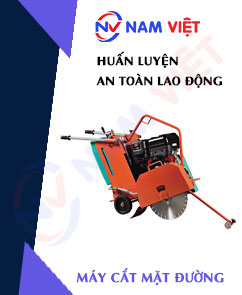
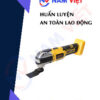
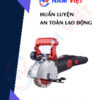








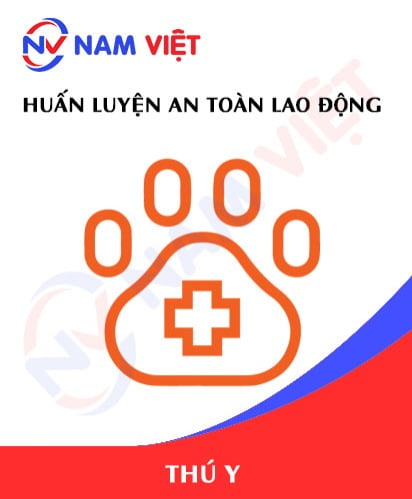

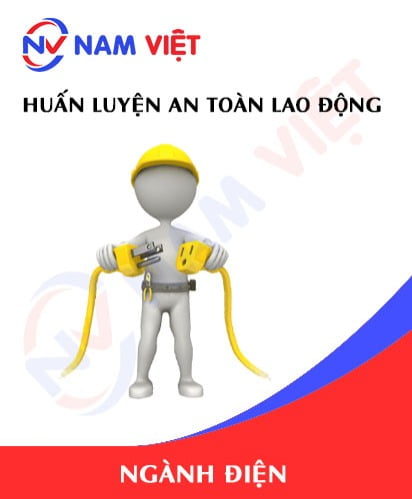
phanminhhang341
The lecturer teaches very lively and easy to understand!